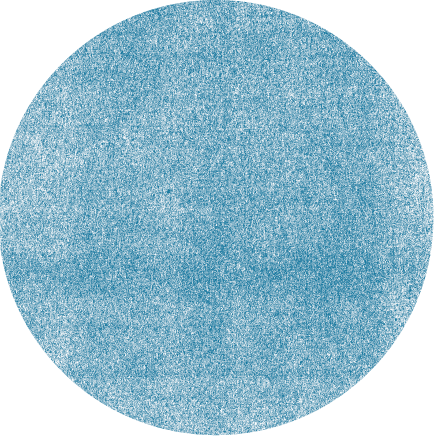CFP: Production Archives 01 – Puppets for Action
Posted by Dr Paula Clemente Vega on 16 June 2021



Open Library of Humanities Journal Special Collection: Call for Papers
Production Archives 01 – Puppets for Action
The open-access special collection Production Archives invites article submissions to a critical forum dedicated to the theme of "Puppets for Action". Published by the Open Library of Humanities journal, this forum aims to overturn the critical relegation of puppetry to a supplementary category on at least two fronts. First, it will draw scholarly attention to the mechanics, materials, histories and contexts of puppet or marionette productions across high/middle/lowbrow genres and formats. Second, it will demonstrate the vitality of these histories and forms to pressing 21st-century theoretical, philosophical and political debates, from production studies, archive studies, and performance studies to new materialism, environmentalism, posthumanism and beyond.
The puppet oscillates between life and death, an inanimate object that comes alive in its interactions with the performer – as such, it functions both as a projection for human concerns and an extension through which the performer becomes more than human. The form’s origins can be traced back to ancient religious practice, ceremonial magic and animistic ritual, revealing the cultic function of puppets that persists into the present (as, for instance, in Balinese Shadow Theatre). The earliest philosophical writings on puppets date back to Plato's conception of humans in terms of string-puppets. Ranging from the miniscule to the colossal, puppetry is of enormous diversity: from rounded (the string puppet or the marionette, the rod-puppet, the hand- or glove-puppet, the finger-puppet) to flat (the shadow-show, the toy or paper theatre); from 'living' marionettes and bodies fastened to performers, to 'held' puppets (Japanese Bunraku theatre). Puppet performances span art forms as diverse as folk theatre and élite entertainment. One needs only to recall 18th-century operas penned for puppets; Gordon Craig's non-naturalistic refashioning of the actor as a mechanically operated 'Über-marionette' in turn-of-the-20th-century theatre; Maurice Maeterlinck's symbolist dramas for marionettes and Alfred Jarry's proto-absurdist Ubu Roi (1888) for puppets; Modernist, avant-garde transformations of dancers and actors into puppets in experimental Bauhaus (Oskar Schlemmer's triadic ballet) and Dadaist performances; or giant rod-puppets put to use by the radical political protest street performances of The Bread and Puppet Theatre in New York in the 1960s.
This open-access collection addresses this significant critical gap by publishing high quality peer-reviewed articles that chart the status quo of research on puppet theatre and foster interdisciplinary engagement with puppets in world theatre. We invite papers from a wide academic field as well as from practitioners. In particular, we are interested in articles that address the following topics:
• practitioner approaches to the puppet (the performance mechanics and design craft of actual puppet productions)
• theoretical and thematic approaches to the puppet (performance, identity, effect, genre, gender, sexuality, race, disability studies, social history, kinetic semiotics, post-/transhumanism, new materialism, etc.)
• archival approaches to the puppet (the practices and difficulties of archiving the materials/detritus of puppetry performances, either in material or digital forms, as in the digitised production archives of the Salzburg database: see CORE – THEATRE | OPERA | FESTIVAL at http://kultur.plus.ac.at/index.php/core)
• puppetry platforms (from street puppetry to the stage, from multimedia to transmedia)
• the institutional, economic, technical, and/or creative production contexts of the performance and/or archiving of puppetry
• the ethics and aesthetics of puppet theatre
• the role and variety of puppets in performance
• historical, anthropological, theological, political and intercultural perspectives
• the practice of puppet theatre in the past and in the present
• case studies exploring individual puppet theatre traditions and productions
Research articles should be approximately 8000 words in length, including references and a short bibliography. Submissions should include:
• Abstract (250 words)
• Full-length article (8000 words)
• Author information (short biographical statement of 200 words)
The deadline for submission is currently open on a rolling basis.
The special collection, edited by Prof. Sabine COELSCH-FOISNER (editor-in-chief), Prof. Vicky ANGELAKI, Dr. Paul FAGAN, Prof. Roger LUCKHURST, is to be published in the Open Library of Humanities (OLH) (ISSN 2056-6700). The OLH is an Andrew W. Mellon Foundation-funded open-access journal with a strong emphasis on quality peer review and a prestigious academic steering board. Unlike some open-access publications, the OLH has no author-facing charges and is instead financially supported by an international consortium of libraries.
Submissions should be made online at https://olh.openlibhums.org/about/submissions/ in accordance with the author guidelines and clearly marking the entry as PRODUCTION ARCHIVES 01 - PUPPETS FOR ACTION. Submissions will then undergo a double-blind peer review process. Authors will be notified of the outcome as soon as reports are received and an editorial decision made.
Contact: Prof. Sabine COELSCH-FOISNER (sabine.coelsch-foisner@sbg.ac.at)
To learn more about the Open Library of Humanities please visit: https://www.openlibhums.org/
If you like the work that the Open Library of Humanities is doing, please consider asking your institution to support us financially. We cannot operate without our library members. More details for libraries can be found here: https://www.openlibhums.org/plugins/supporters/signup/.
